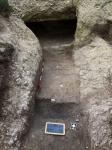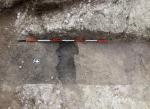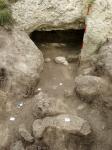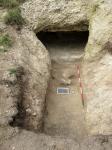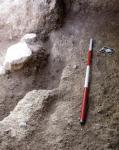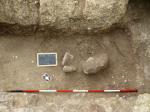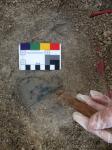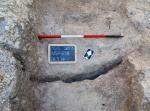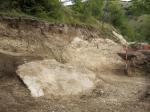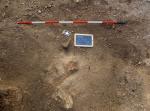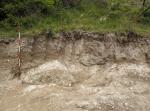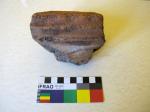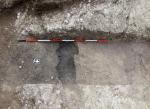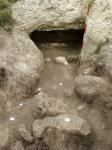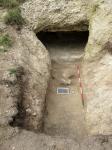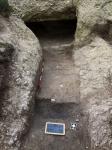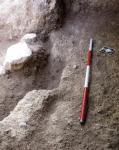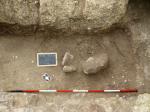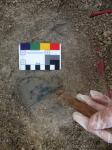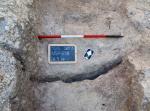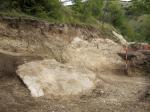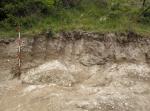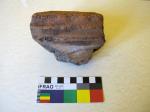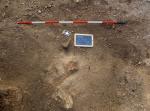Summary (English)
The first excavation campaign at the Palazzo of Villa Adriana was performed by the Department of Archaeology of the Universidad Pablo de Olavide (Sevilla, Andalucía, Spain) around the area of the. This project follows the previous archaeological investigations developed during the period 2003-2012 at the Teatro Greco of the same villa, and was preceded by documentation around the area of study during September 2013.
This campaign took place in two distinct phases. During the first one, April to May, attention was centred on the open space located by the stibadium at the Palazzo (triclinio estivo, stibadium). The opening of Trench 1 revealed the presence of a portico aligned with the sides of the exedra that surrounds the stibadium. The central area of this space would subsequently be formed by a viridaium, in this case without incorporating the central euripus that would later be part of the architecture seen at the Canopo.
The works done during the phase that took place in September of the same year, were centred on the definition of the southern edge of the western peristyle of the Palazzo, formed by the Triclinio Estivo.
Trench 2 was located at the central area of the exedra as well as in the one that precedes it. Here work concentrated on the cleaning of the visible structure, which allowed us to understand the different building stages as well as to study the previous structures (at times reused). Some well-documented structures located within this area belong to the phase previous to the reworking of the area, a good example being the wall of the basis villae used as the physical limit to the western area where a series of leisure spaces would be added. Among these one stands out: an exedra that, symmetrical to the one located at the opposite sector, holds a ninfeo most likely to be the source of the numerous revetment fragments found (various kinds of shells, glass, tesserae of glass paste…), which shows its connection to an aquatic atmosphere.
Trenches 3 and 5, were disposed following the line established by the western portico, so as to try and check whether there was an east-west wall closing the space found before the stibadium. Under a series of layers and pits, that prove the various activities that have taken part in the Villa throughout its existence, the Roman structures were found. The only alignment found was the stylobate of the western portico, continuing the preserved fragment of the northern line. This wall, built during the Republican era as a retaining wall to the terrace located to the east of this area, was built in opus incertum, similar to polygonal masonry. During the imperial period, the terrace wall of the basis villae was used to support the area with portico of the peristyle, and the intermediate space was filled with a considerable amount of loose rubble once a new terrace wall was built to the West.
Trench 4 was created to check on the existence of a sewer system suggested by a small opening on the ground. This was the case: it runs inside the western ambulatio and takes a southeast turn at the southern side of the trench does, heading towards the door into the area, draining to the exterior. It is likely that the drain was connected with the drainage system of the peristyle.
- Rafael Hidalgo - Universidad Pablo de Olavide (Sevilla)
- Julia Ventura
- Inmaculada Carrasco Gómez - Universidad Pablo de Olavide de Sevilla
Director
Team
- Giuseppina E.Cinque - Universidad de Tor Vergata (Roma)
- Alessandra Tronelli - Nadir
- Yolanda Peña Cervantes - ICAC
- Ana Felipe - Universidad de Córdoba (Córdoba)
- Antonio Zafra
- Alessandra Tronelli - Nadir
- Luciano Mº Rendina - Universidad de Tor Vergata (Roma)
Research Body
- Universidad Pablo de Olavide de Sevilla
Funding Body
- Ministerio de Cultura de España
- Universidad Pablo de Olavide de Sevilla






![Download [PDF]](/excavation/skins/fasti/images/results/download_sml.png)

